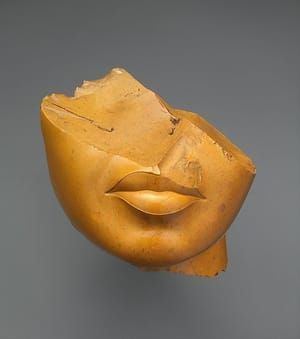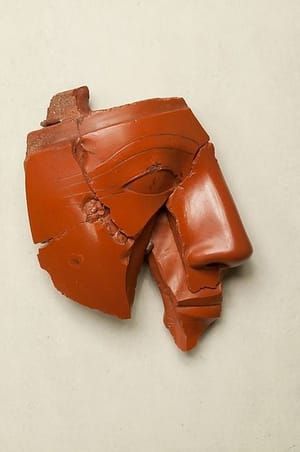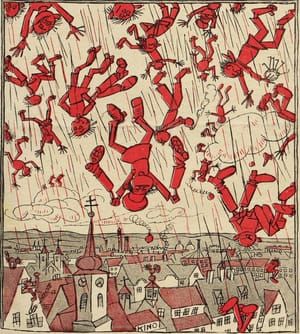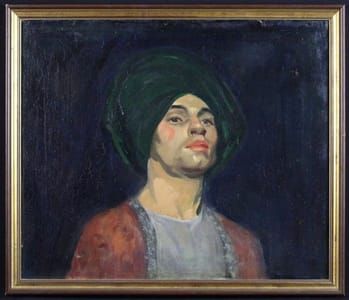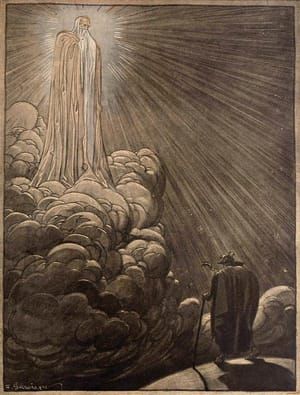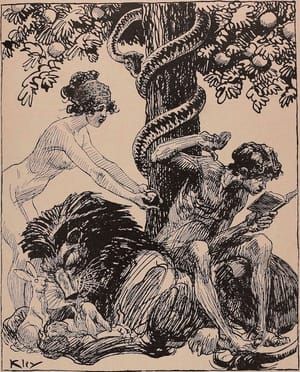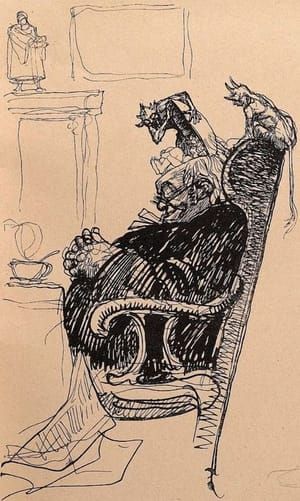
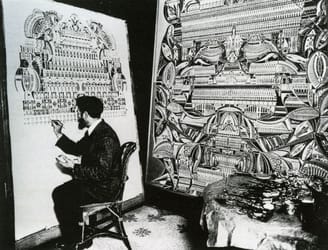
Augustin Lesage at Work
Unknown
Then one evening in 1911, when he was 35 years old, he heard a voice underground that told him “One day, you will be a painter.”
A year later, partly through his involvement in Spiritualist circles, Lesage began communicating via automatic writing with “spirits,” including one he believed to be his sister Mary who had died in childhood. The spirits told him,
The voices you heard were real. You will be a painter. Fear not, and heed our advice. You will find it ridiculous in the beginning, but we are the ones tracing through your hand. Do not try to understand.
The voices proceeded to tell him which colors and brushes to buy, and where to order a canvas. Lesage ordered a small canvas, but when it arrived, it measured 3 meters square. He wanted to cut it into smaller pieces, but the voices stopped him.
For the next two years, he came home from the mines every night and went to work, letting the spirits guide his hand. He began in the upper right corner and gradually filled the entire canvas (which is now in Jean Dubuffet’s Collection de l’Art Brut in Lausanne). The composition was built by filling in small areas at a time. The spirits did not let him evaluate the work in its entirety: part of the canvas remained rolled as they guided his hand. “It was like working without working,” the artist recalled.
Like the paintings themselves, Lesage’s position within art history is peculiar. Though held in high esteem by the Surrealists, Lesage’s legacy is strong but obscure: of the 800 canvases he left behind, most have seldom been exhibited abroad. English-speaking audiences are hard pressed to find any information on the artist. (I just ordered a French exhibition catalogue from a 1988 retrospective.)
Lesage’s patterns are unmistakable. After noting the symmetry of the first large canvas, he began organizing his compositions along a central axis, building complex geometric structures in horizontal layers from the center outward. An article by Christian Delacampagne quoted on Lesage’s Wikipédia article states (my translation):
The first large painting of Augustin Lesage is one of the most daring in modern art. Although not, strictly speaking, non-figurative (figures both architectural and anthropomorphic abound), it explores almost all possibilities of abstraction—lyrical as well as geometric—at a time when the latter, among professional artists, was still in its infancy. They are no less ornamental and decorative than the works of Kandinsky, Lesage’s spiritual contemporary. Indeed, is the distance so great between the the Theosophy dear to the Russian artist and the Spiritualism embraced by the French? The former hearkens to Rudolf Steiner, the latter to Léon Denis....
(https://emilypothast.wordpress.com/2009/06/23/augustin-lesage-french-1876-1954/)
Uploaded on Apr 26, 2017 by Suzan Hamer
Unknown
artistArthur
Wait what?
